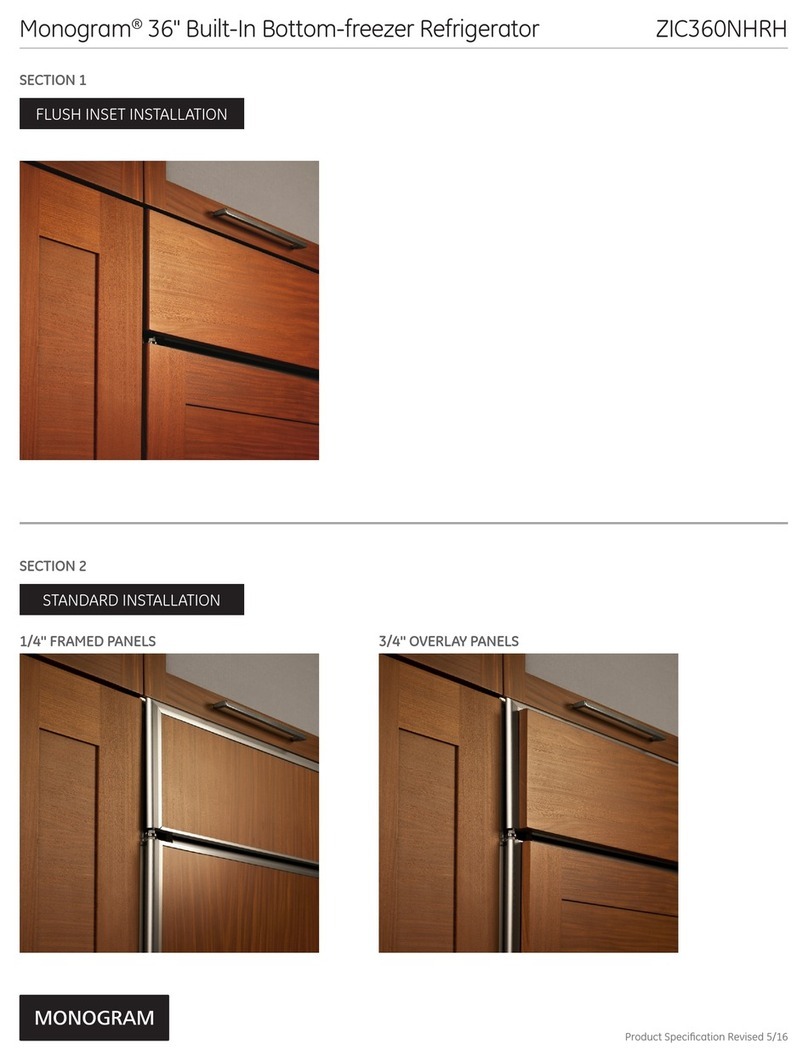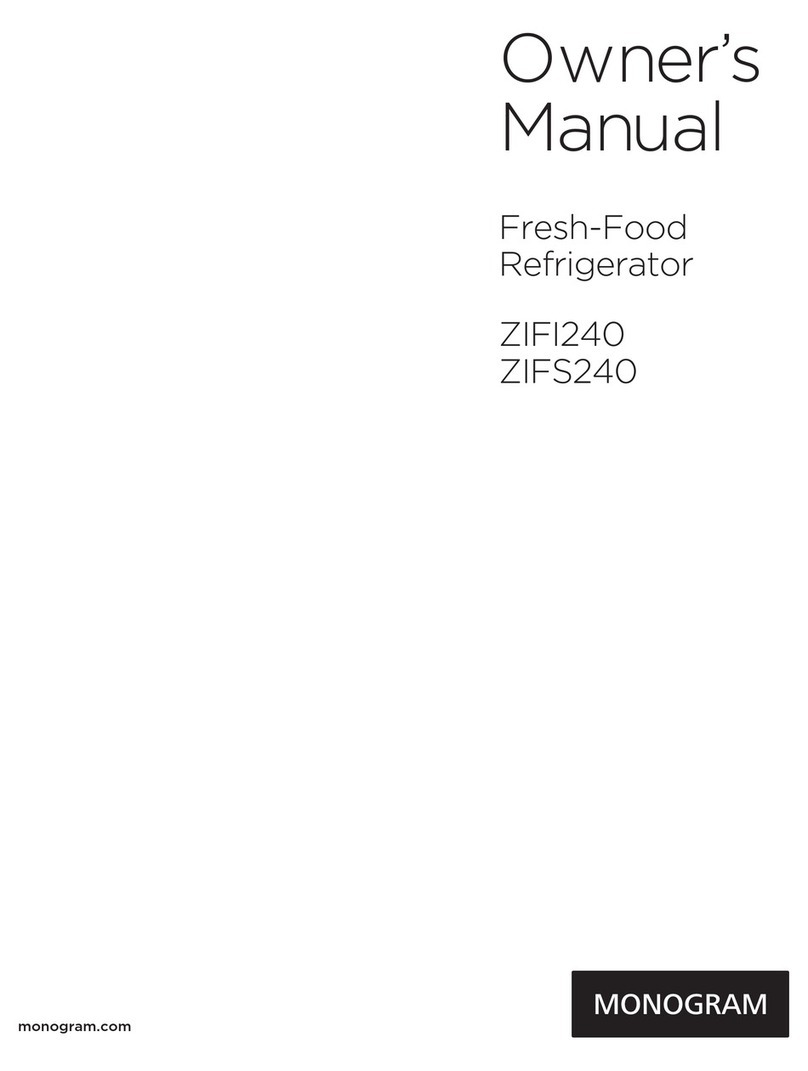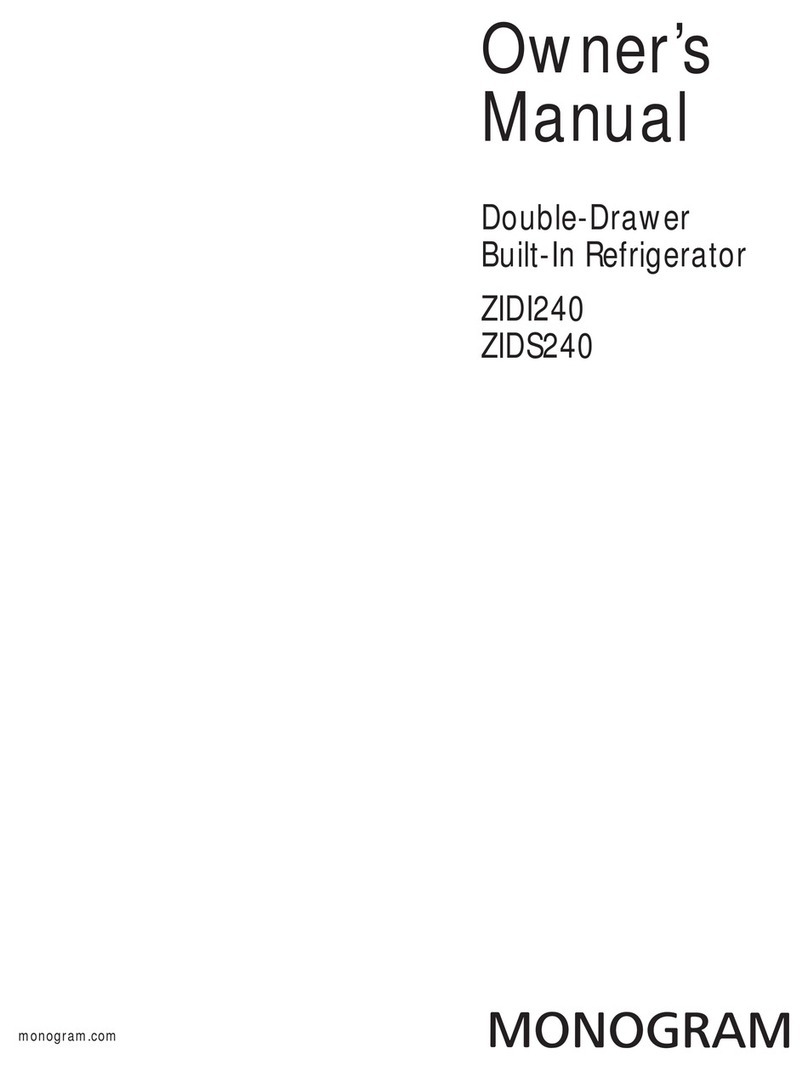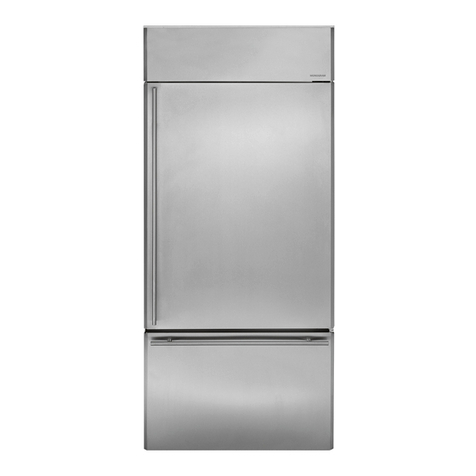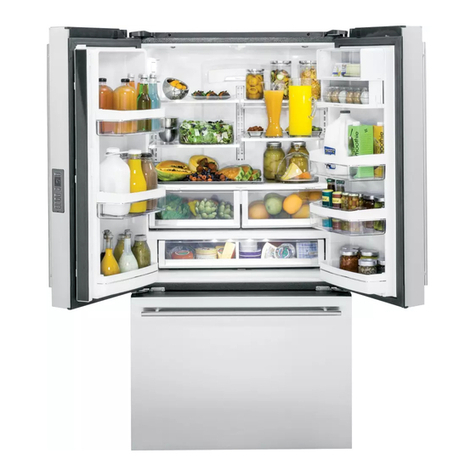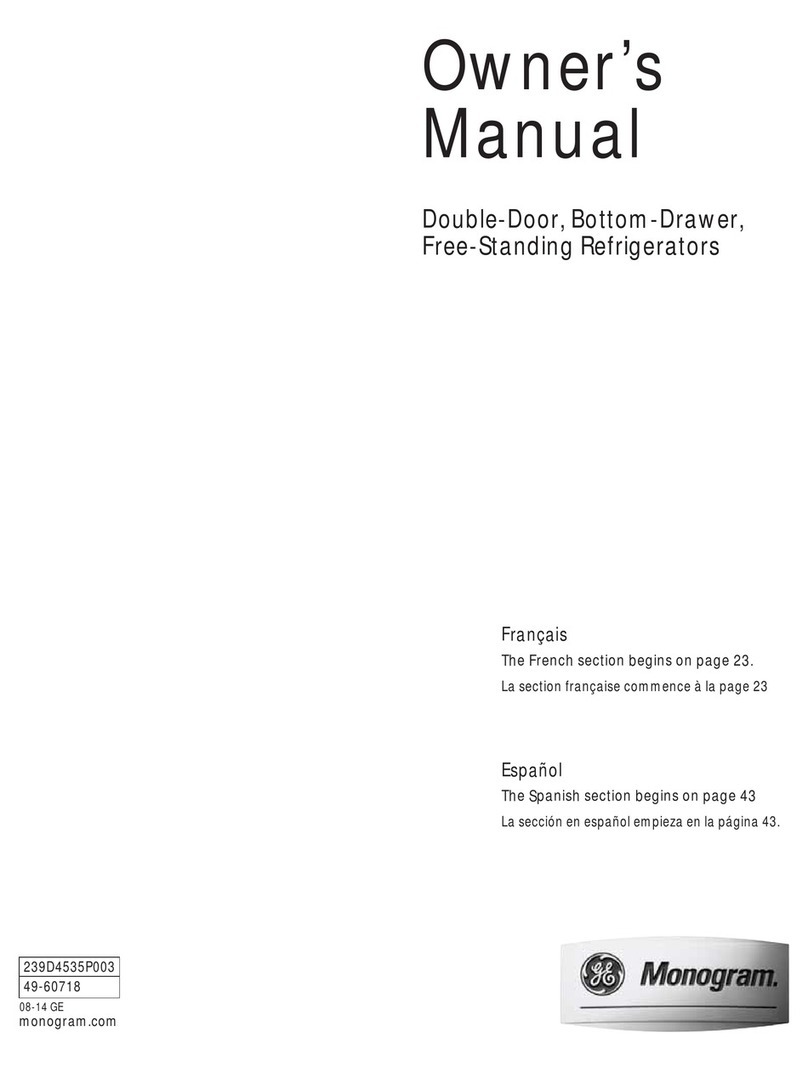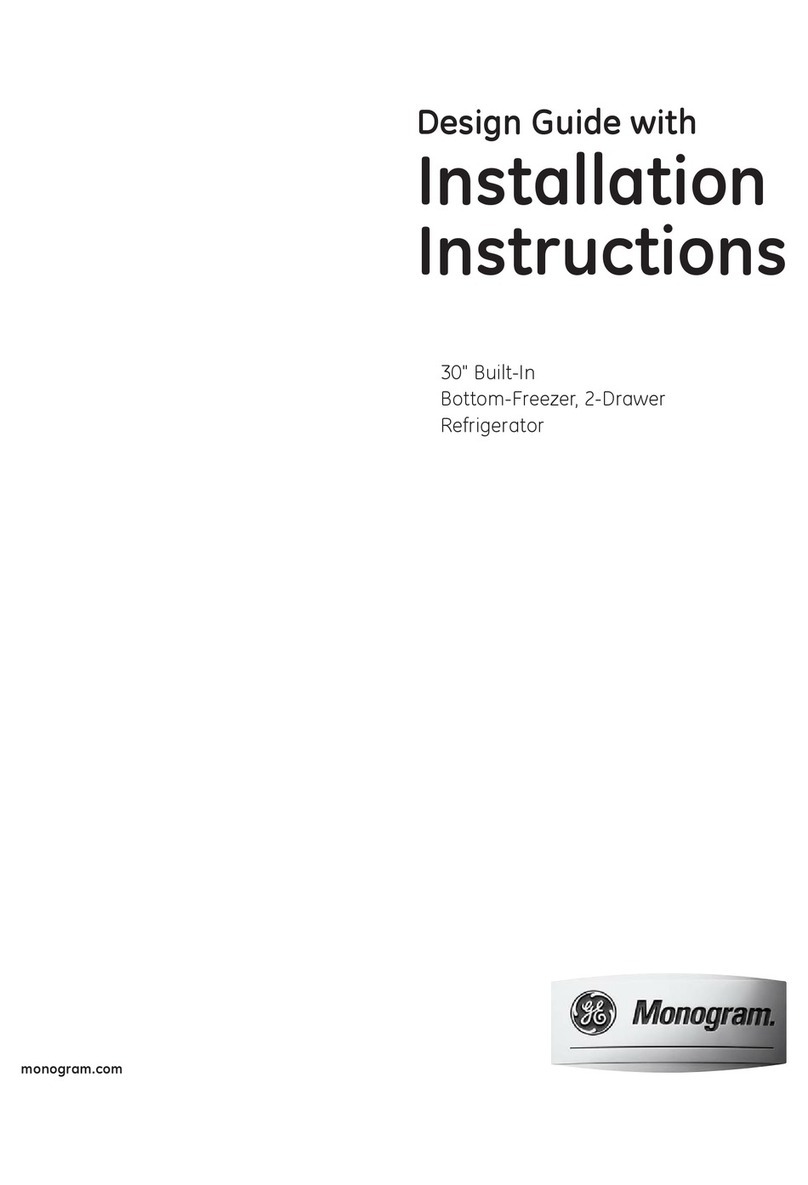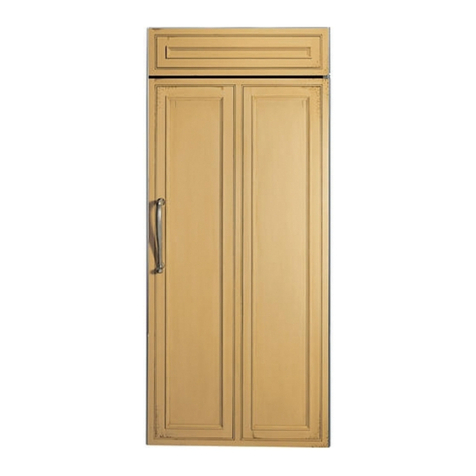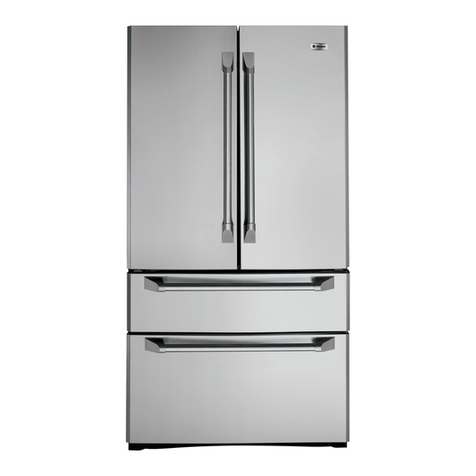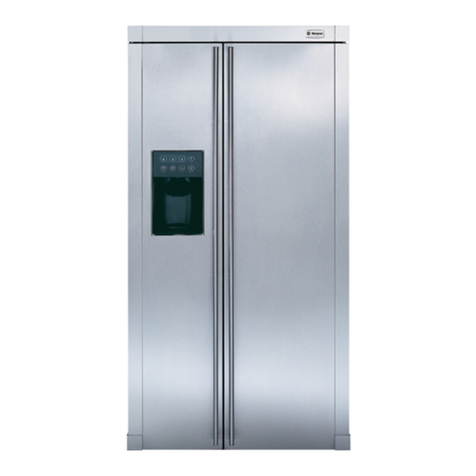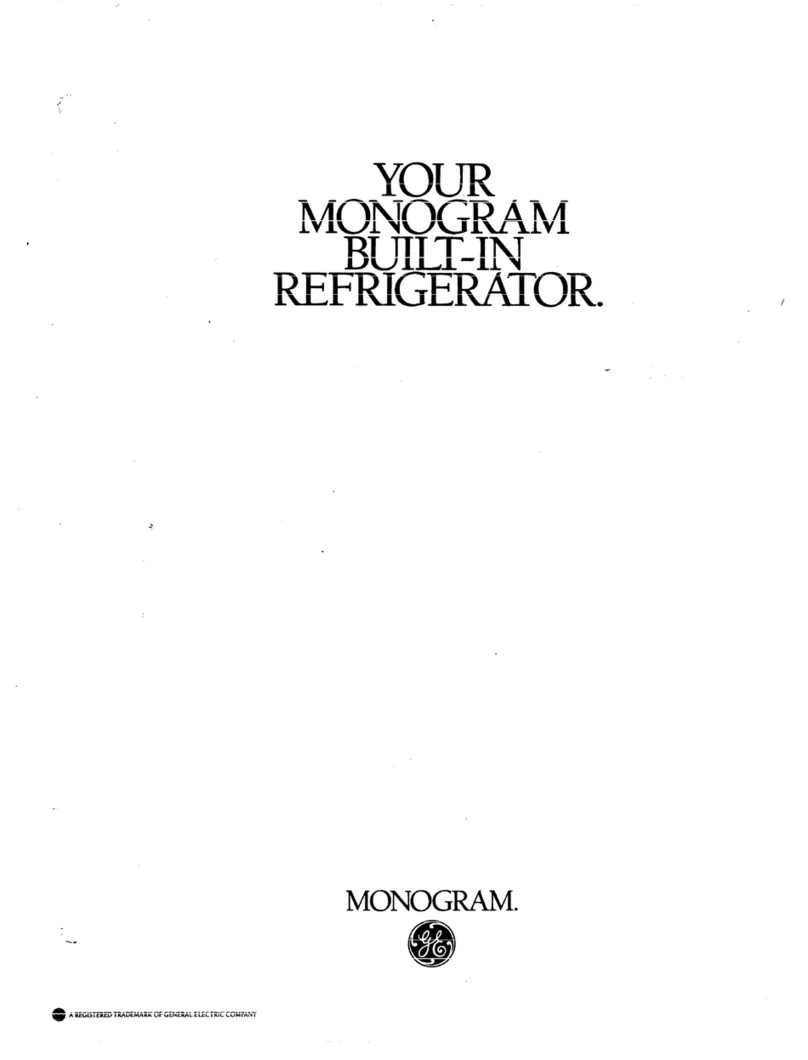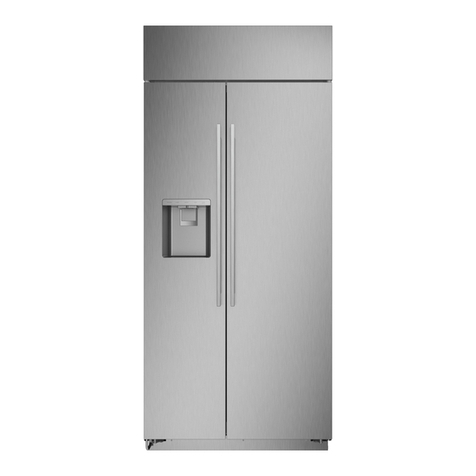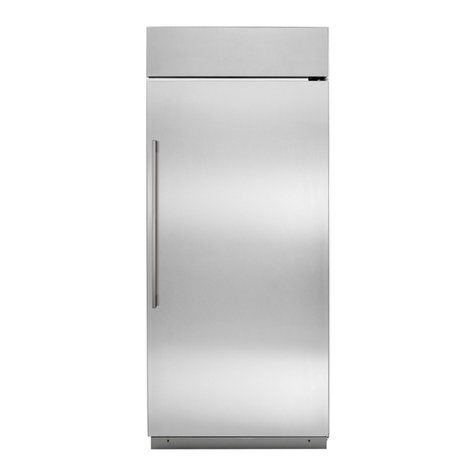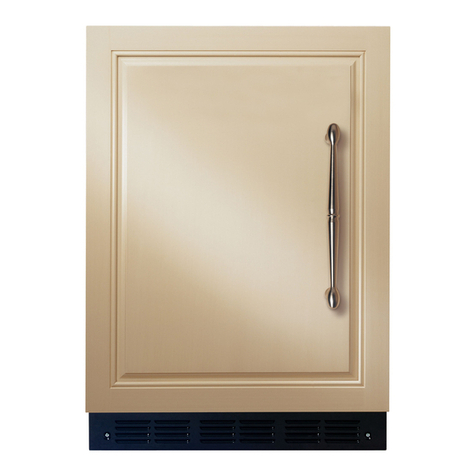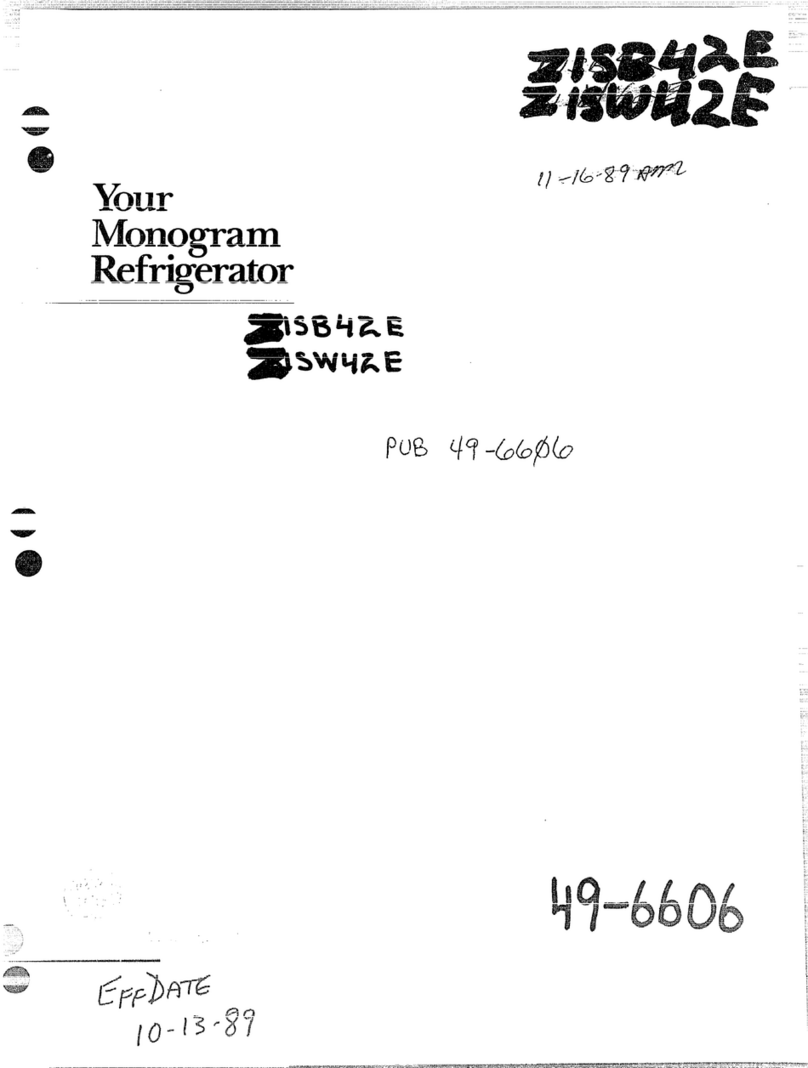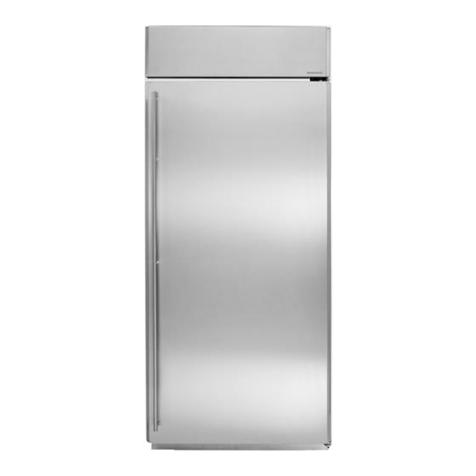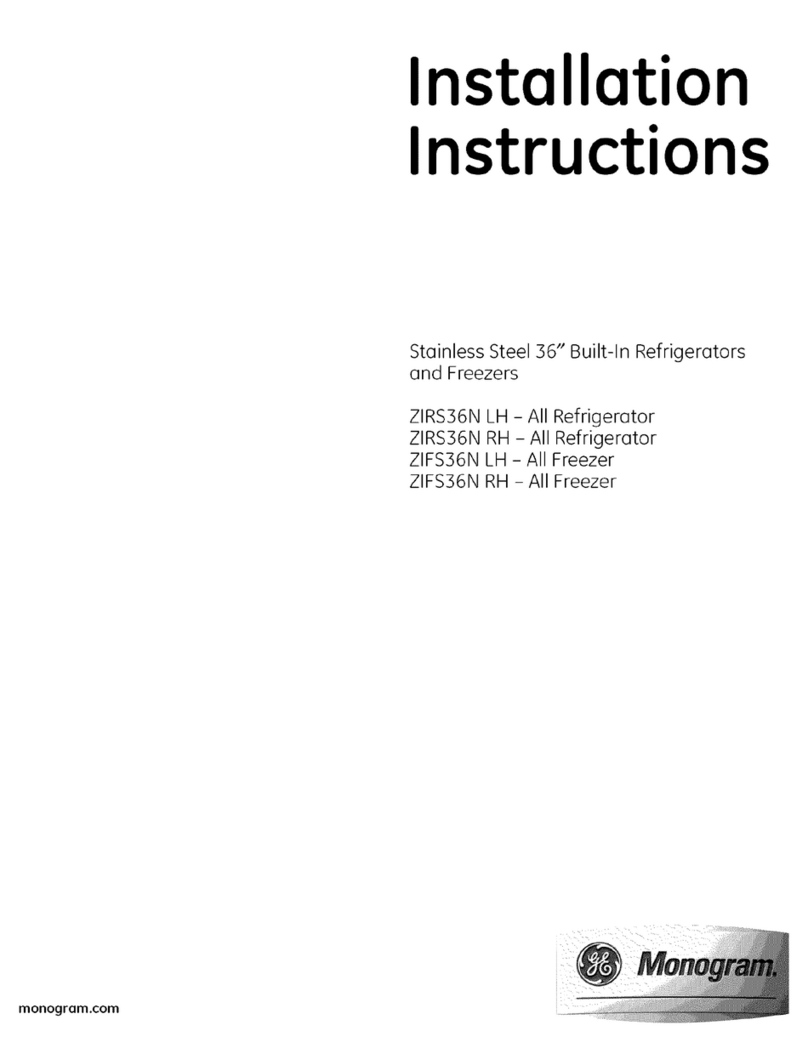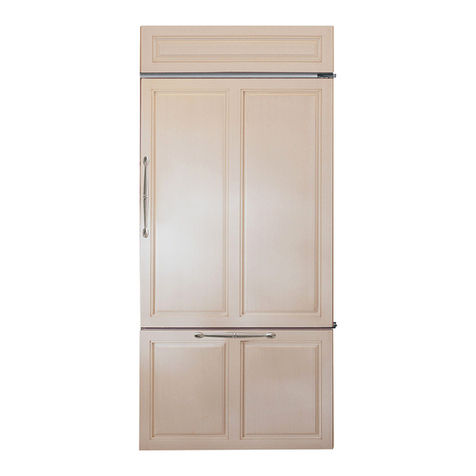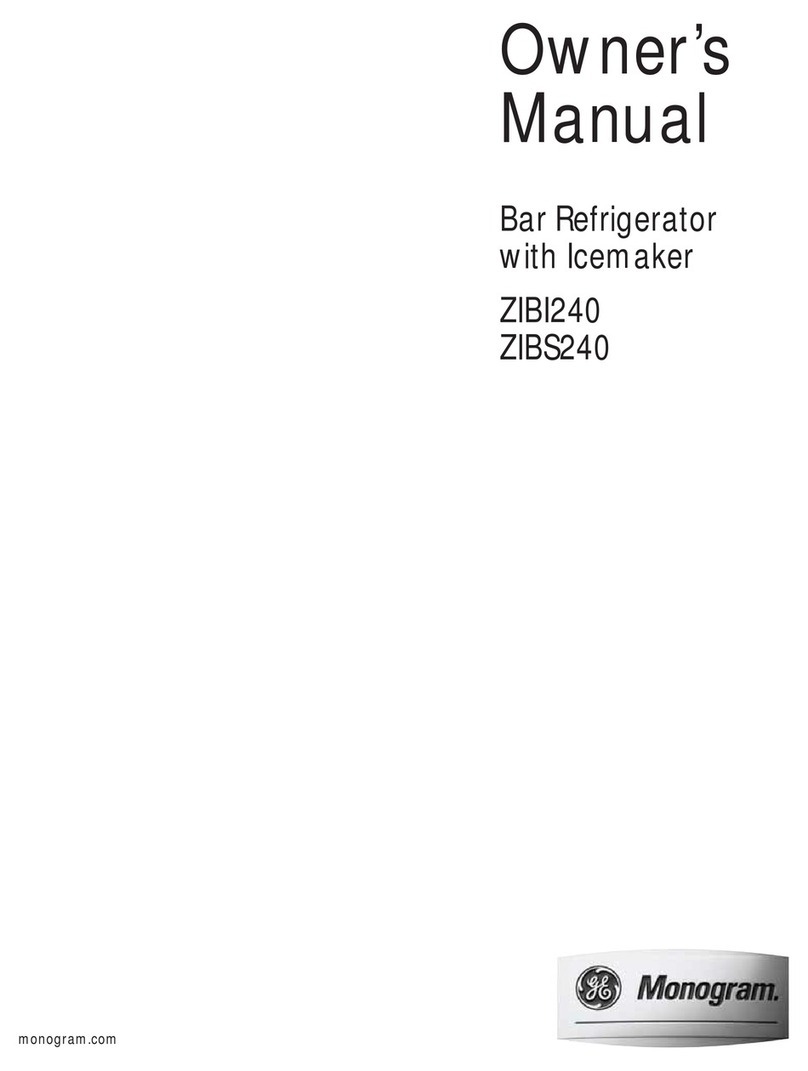
449-60432-9
CAUTION
To reduce the risk of injury when using your refrigerator, follow these basic safety precautions.
■ Donotcleanglassshelvesorcoverswithwarmwater
when they are cold. Glass shelves and covers may
break if exposed to sudden temperature changes or
impact, such as bumping or dropping. Tempered glass is
designed to shatter into many small pieces if it breaks.
■ Keep fingers out of the “pinch point” areas;
clearances between the doors and between the doors
and cabinet are necessarily small. Be careful closing
doors when children are in the area.
■ Makesuredishescoolpriortostoringtheminthe
outdoor/indoor refrigerator. Certain types of glass,
ceramic, earthenware or other glazed utensils retain heat.
Hot dishes can cause the cold glass shelves to break.
■ Donotrefreezefrozenfoodsthathavethawedcompletely.
READ AND SAVE THESE INSTRUCTIONS
WARNING To reduce the risk of fire, explosion, electric shock, or injury when using your refrigerator,
follow these basic safety precautions:
■ Usethisapplianceonlyforitsintendedpurposeas
described in this Owner’s Manual.
■ Thisrefrigeratormustbeproperlyinstalledandlocatedin
accordance with the Installation Instructions before it is
used.
■ Unplugtherefrigeratorbeforemakingrepairs,replacinga
light bulb, or cleaning.
NOTE: Power to the refrigerator cannot be disconnected
by any setting on the control panel.
NOTE: Repairs must be performed by a qualified Service
Professional.
■ Replaceallpartsandpanelsbeforeoperating.
■ Keepflammablematerialsandvaporsawayfromthe
appliance.
■ Donotstoreexplosivesubstancessuchasaerosolcans
with a flammable propellant in this appliance.
■ Donotuseanextensioncord.
■ Topreventsuffocationandentrapmenthazardsto
children, remove the fresh food and freezer doors from
any refrigerator before disposing of it or discontinuing its
use.
■ Toavoidseriousinjuryordeath,childrenshouldnotstand
on, or play in or with the appliance.
■ Childrenandpersonswithreducedphysical,sensoryor
mental capabilities or lack of experience and knowledge
can use this appliance only if they are supervised or have
been given instructions on safe use and understand the
hazards involved.
■ Thisapplianceisintendedtobeusedinhouseholdand
similar applications such as: staff kitchen areas in shops,
offices and other working environments; farm houses;
by clients in hotels, motels, bed & breakfast and other
residential environments; catering and similar non-retail
applications.
■ Donotoperatetheunitwherethetemperaturewillgo
below 45°F (7.2°C) or above 120°F (49°C) (see Unit ON/
OFF)
■ Ensuretheoutdoor/indoorrefrigeratorisnotinstalledina
location prone to standing water.
■ Choosealevellocationthatcanwithstand250lbs.
■ Routethepowercordsothatisdoesnotpresentatrip
hazard.
■ Surfacecanbehotindirectsunlightconditions.Use
caution.
■ Ensurethechosenlocationdoesnotpresentatip-over
situation.
■ TheuseofGEAppliancesVacuumBreak(servicepart
#’s WR49X403 and WR49X10026) is not authorized on
the outdoor/indoor refrigerator.
■ Donotapplyharshcleanerstotherefrigerator.Certain
cleaners will damage plastic which may cause parts such
as the door or door handles to detach unexpectedly. See
the Care and Cleaning section for detailed instructions.
IMPORTANT SAFETY INFORMATION
READ ALL INSTRUCTIONS BEFORE USING THE APPLIANCE
WARNING FIRE OR EXPLOSION HAZARD Flammable Refrigerant
This appliance contains isobutane refrigerant, also
known as R600a, a natural gas with high environmental
compatibility. However, it is also combustible. Adhere
to the warnings below to reduce the risk of injury or
property damage.
1. When handling, installing and operating the appliance,
care should be taken to avoid damage to the refrigerant
tubing.
2. Service shall only be performed by authorized service
personnel. Use only manufacturer-authorized service parts.
3. Dispose of refrigerator in accordance with the Federal
and Local Regulations. The flammable refrigerant and
insulation material used in this product require special
disposal procedures. Contact your local authorities for the
environmentally safe disposal of your refrigerator.
4. Keep ventilation openings in the appliance enclosures or
in the built-in structure clear of obstruction.
5. To remove frost, scrape with a plastic or wood spatula or
scraper. Do not use an ice pick or a metal or sharp-edged
instrument as it may puncture the appliance liner and then
the flammable refrigerant tubing behind it.
6. Do not use electrical appliances inside the food storage
compartment of the appliance.
7. Do not use any electrical device to defrost your appliance.
